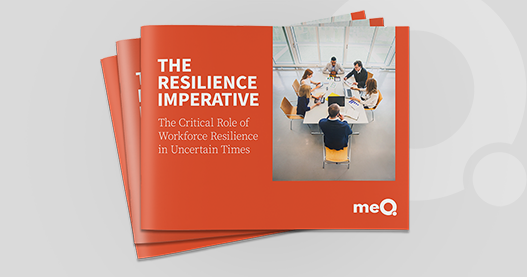After a year defined by a global health crisis, HR executives are reimagining the workplace. From scenario-planning for hybrid models to investing more in technology, HR has never been so focused on cutting through the uncertainty forced upon us by a pandemic.
Today, HR leaders are looking to make definitive decisions around where and how to best build self agency in employees to do their jobs in 2021. While the pandemic has caused unthinkable disruption in the workplace, it hasn’t interrupted the pace of innovation, forcing many employees to work under new conditions while facing ongoing organizational change. According to a report by Dell and the Institute For the Future (IFTF), 85% of the jobs that will exist in 2030 haven’t even been invented yet. With change now being the only constant, so too are employee job requirements.
1 in 4 employees have taken on new work responsibilities due to the pandemic, resulting in additional stressors which lead to spikes in health issues, decreased motivation, and some of the lowest points of engagement at work. Low resilience, left unchecked or unaddressed, often results in burnout and turnover, and stalls business.
Co-founder and Chief Knowledge Officer, Dr. Andrew Shatté, reflected on the impact to individual employees when employers do nothing and people fill in the gaps. “People use emotional reasoning, which is when we use our emotions subconsciously to tell us about the world. Staying calm and focused is the center point of resilience so…whatever emotion you’re experiencing… the first thing to realize is that often these emotions are based on thoughts and not reality.”
In order to rise above the everyday obstacles we face, both as individuals and a collective workforce, businesses must prioritize the cultivation of a workforce of resilient people and a culture that supports it.
Why it’s imperative to take action NOW
Many might think of resilience as the ability to bounce back from setbacks and even catastrophic events. As Dr. Shatté says, “this is not what resilience is, this is what resilience does.” To dispel this misunderstanding, in 1997 he set out to identify the ingredients of resilience and found it’s composed of reactive capacities and proactive capacities. This is what meQuilibrium is based on: a science-backed workforce strategy that when applied at scale can empower employees to drive your business forward.
Resilience at this scale puts employees in an advantageous position to adapt to daily events and challenges without the high levels of stress, anxiety, and general resistance to moving forward. This transforms the employee experience for the better and gets to the root issue behind well-being and performance challenges.
Resilience drives agility, which is the number one success criteria for organizations. But, if your business and teams are agile, but lack resilience you will likely experience performance and well-being issues. One study found the unanticipated consequences of agility without resilience results in increased risks including 27% increase in depression, a 54% increase in anxiety, and an increase by 5.5 days in absenteeism.
meQuilibrium has assessed the resilience of thousands and thousands of people around the world, and what we found is crucial for HR leaders. People with high levels of resilience experience:
-
60% less likely to suffer from burnout
-
31% more engaged in their work
-
50% less stress in relation to productivity loss
Download “The Resilience Imperative: The Science Behind Organizational Resilience” to adapt for the now and prepare for the future with meQuilibrium.

